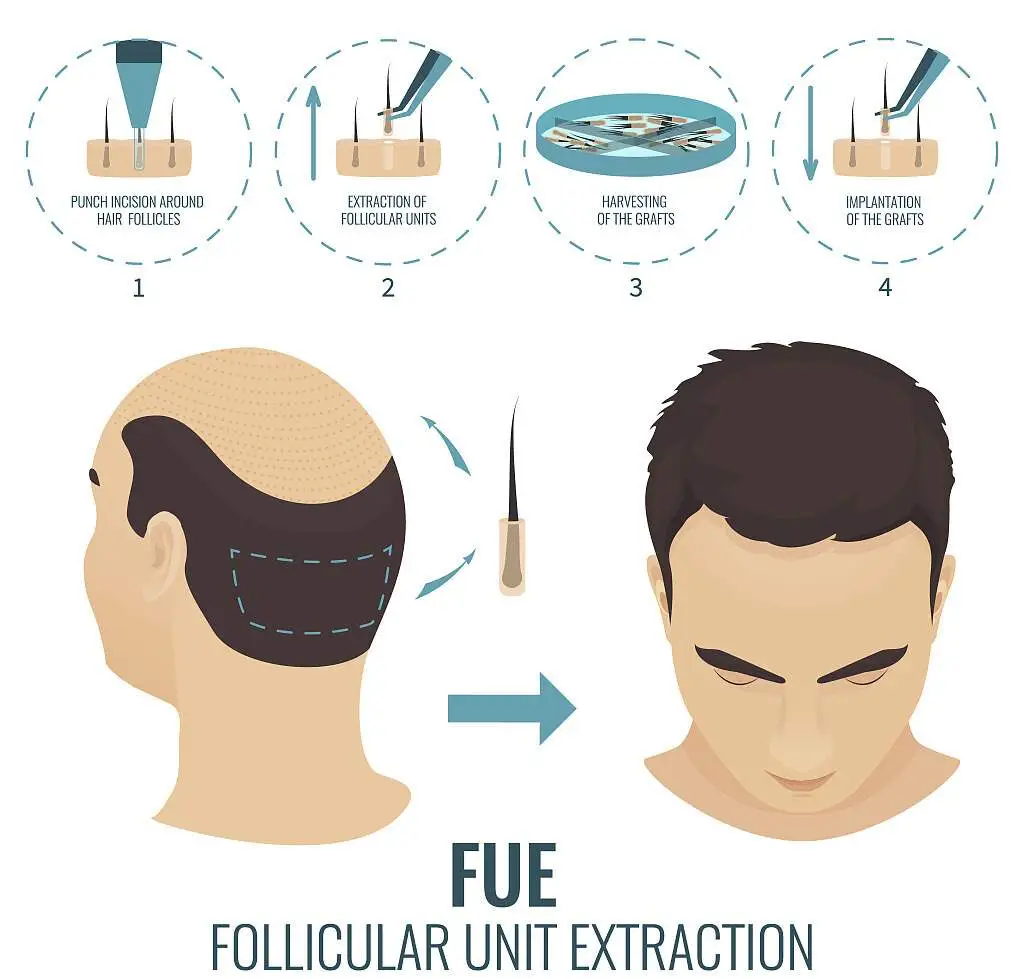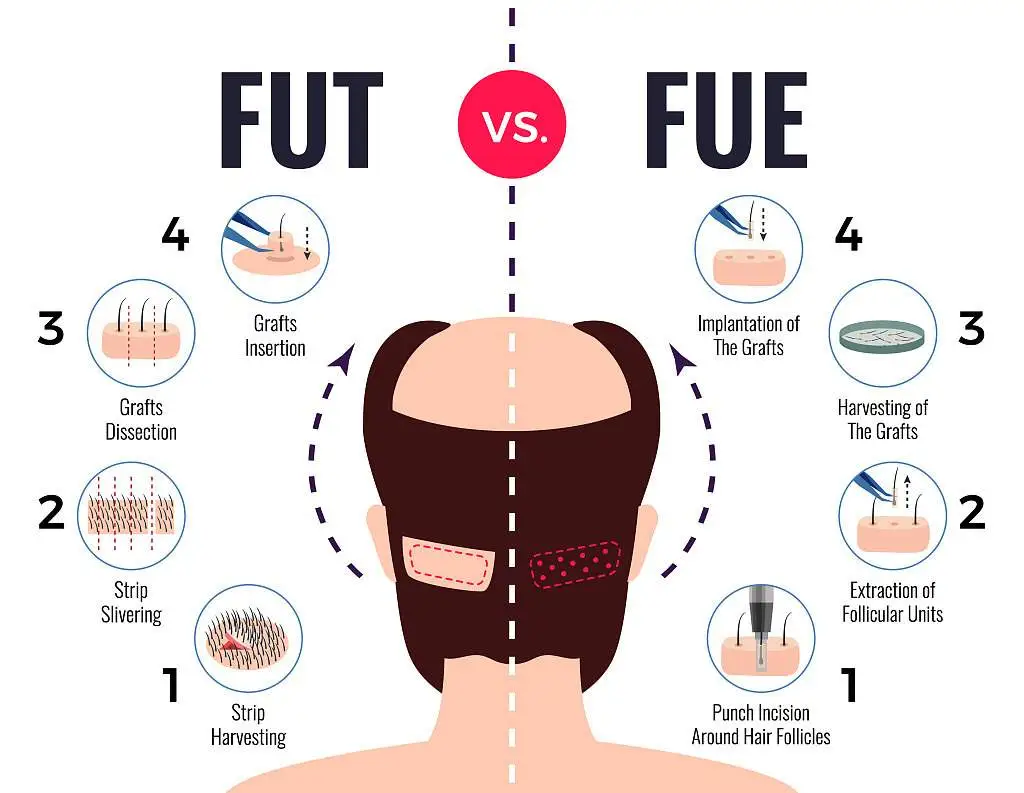FUE vs FUT | The best Follicular unit extraction Method
Both FUE and FUT are considered effective treatment options for permanent hair restoration. These procedures offer permanent results and give the person a youthful appearance by restoring a full head of hair.
In addition, both follow a similar approach of taking strong, healthy hair follicles from the donor region and Implanting them into the recipient area. However, the method of extracting follicular units is different for FUE and FUT.
Before providing you with some much-needed clarity on the never-ending FUE vs FUT debate, know about these hair restoration techniques first.

FUE Hair Extraction
During a Follicular Unit Extraction hair transplant, micro punch surgical tools are used to extract follicular unit grafts individually from the back or side of the scalp. The physician selects a donor site where the hair follicles are healthy and DHT-resistant for implantation.
Moreover, FUE surgery is lengthier as each follicle is harvested individually. This intricate procedure must be performed by a highly trained professional. Since it ensures minimal scarring, the patient recovers quickly and gets back to normal life in no time.
FUT Hair Extraction
In Follicular Unit Transplantation or Strip Harvesting, a surgeon carefully removes a strip of hair-bearing skin usually from the back of the scalp as follicular units in this region are not prone to hair loss.
Then, the donor region is closed with stitches or staples and the strip is cut into tiny sections and implanted in the area with thinning and balding. This procedure is more common for people suffering from receding hairline.
Difference Between FUT and FUE
There are a number of differences between these procedures, however, they deliver natural-looking, lifelong results. Follow along to know what sets these two hair restoration techniques apart.
During FUE surgery, hair follicles are either extracted manually or robotically. Each hair follicle is harvested separately and transplanted to the scalp area experiencing balding. That’s the reason why it takes more time to complete than the FUT procedure.
In the FUT procedure, a strip of hair-bearing skin is removed from the donor region and dissected into smaller follicular unit grafts. These grafts are then transplanted individually to the recipient site.
Donor Site
In the FUE procedure, follicular unit grafts are extracted from a broader scalp area, therefore, often recommended to patients lacking a sufficient amount of hair in the donor region.
In FUT hair transplant, physicians usually remove a strip of skin from the side or back of the head to transplant in the recipient area.
Hair Follicle
Quality follicular unit grafts can be harvested using both hair restoration methods, however, the FUT procedure provides a higher chance of yielding a large number of quality grafts. Similarly, grafts extracted through FUT are intact and have a higher survival rate.
In addition, the robotic FUE method harvests more quality grafts than the manual technique. Also, the skill level and experience of the physician have an important role to play in harvesting good-quality grafts with less damage.
FUT Scarring
It should be noted that FUE is not entirely scar-less and leaves hundreds of smaller, dot-like scars across the donor area. These micro-scars are barely visible and heal quickly allowing you to start work sooner.
In contrast, FUT surgery leaves a single, elongated scar where the strip was initially removed, however, it is eventually concealed when the hair grows longer.

Hair Transplant Recovery
FUE is advised for patients who want less discomfort during and after the surgery and a shorter recovery time. The tiny wounds heal quickly, requiring considerably less downtime.
In comparison, since FUT is a more invasive procedure, the linear scare takes longer to heal. Often, the patient has to wait 10 to 15 days before getting back to normal life.
FUE Costs
Due to the intricacies of the procedure, FUE is more time-consuming and costly. The average cost per graft is higher than FUT, therefore, not recommended for someone requiring a large number of grafts.
FUT is an older technique and less expensive than FUE surgery. Anyone who wants better coverage and requires a larger number of grafts can opt for this surgery.
Final Verdict
To summarize, it is hard to pick one method as the ultimate winner because the physician determines the best treatment option for the patient depending on the severity of hair loss and the availability of hair in the donor region. Both procedures have their benefits and risks, however, FUE has an edge over FUT due to fewer side effects.







